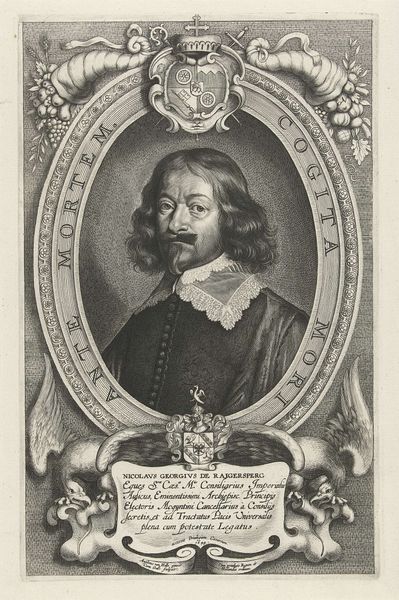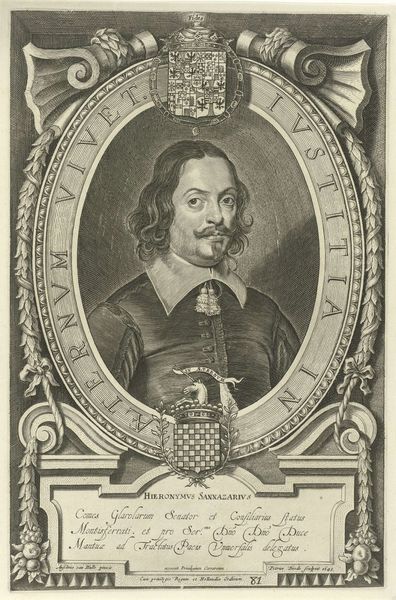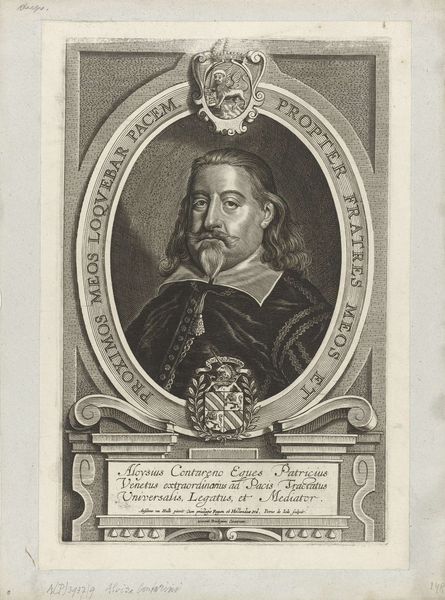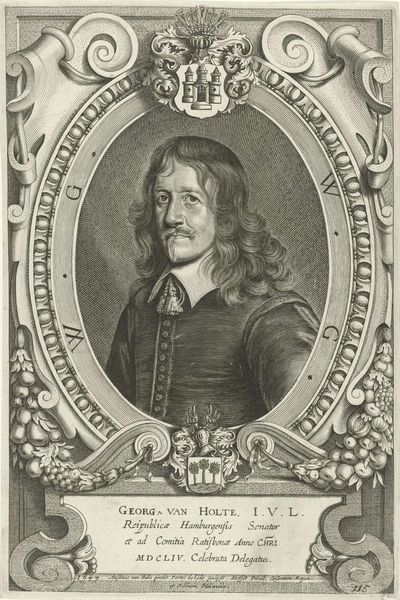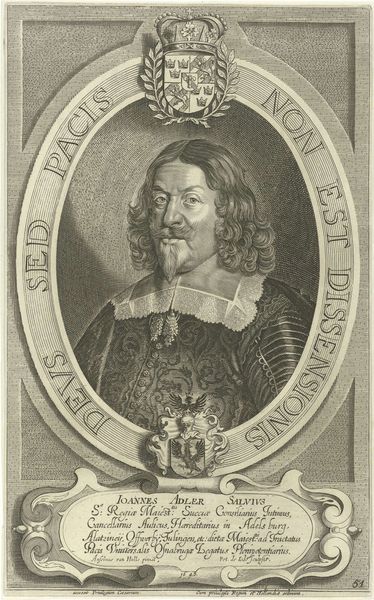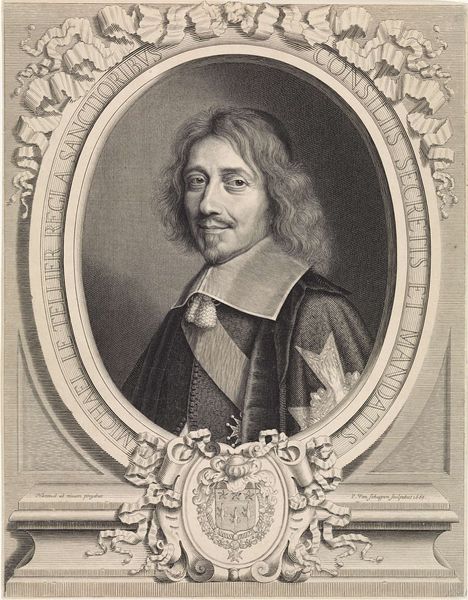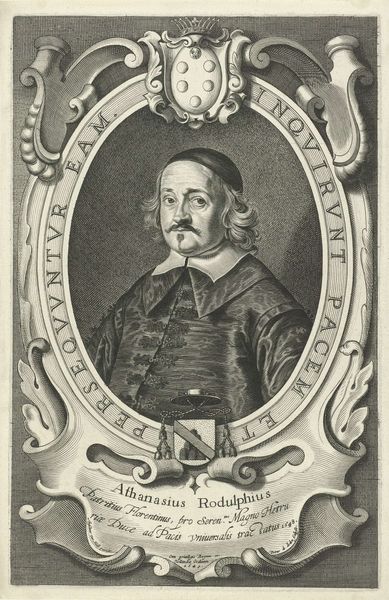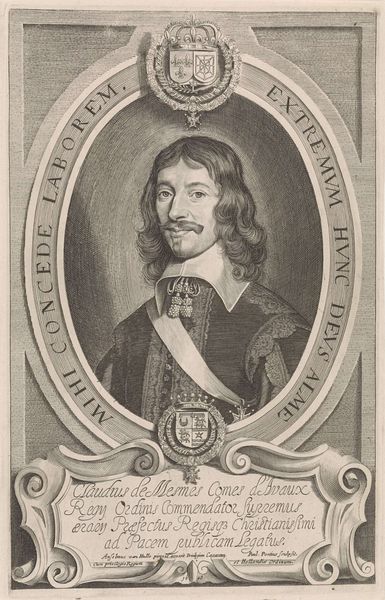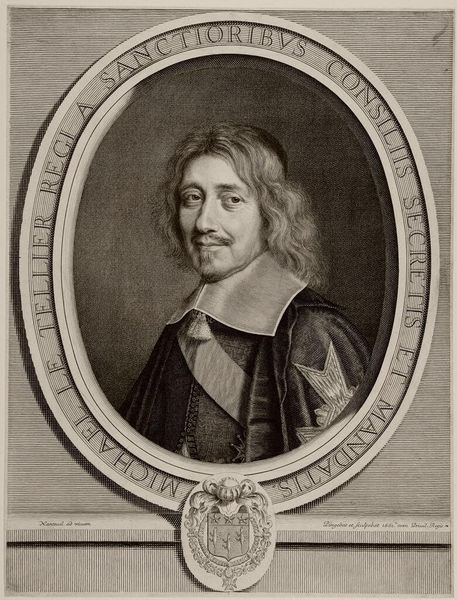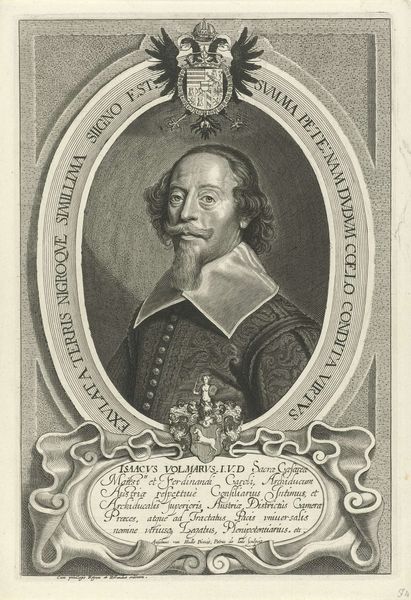
print, engraving
#
portrait
#
baroque
# print
#
old engraving style
#
caricature
#
history-painting
#
academic-art
#
engraving
#
realism
Dimensions: height 300 mm, width 198 mm
Copyright: Rijks Museum: Open Domain
Mattheus Borrekens made this portrait of Gerhard Schepeler, sometime in the mid-17th century, using the technique of engraving. This process involves cutting lines directly into a metal plate, inking it, and then transferring the image to paper under high pressure. You can see the precision this method allowed, in the fine details of Schepeler's face and clothing. But look closer, and you’ll see an incredible amount of labor embedded in the work. Each line had to be manually carved. This wasn't just a way to make an image; it was a deeply skilled craft, connecting Borrekens to a community of artisans. Also, consider the social context. Engravings like this were luxury items, intended for circulation among a wealthy, educated elite. The portrait itself declares Schepeler's status, and the very act of commissioning such a print was a statement. So, next time you see an engraving, remember it's not just an image. It's a record of skilled labor, material choices, and social standing.
Comments
No comments
Be the first to comment and join the conversation on the ultimate creative platform.
